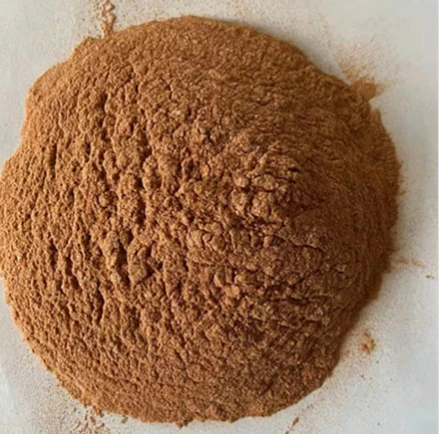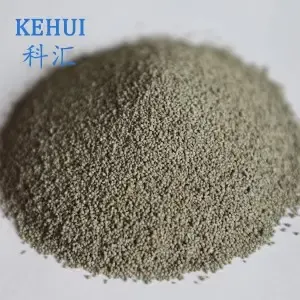Refractory Cenospheres Lightweight High-Temperature Insulation Solutions
- Understanding Refractory Cenospheres: Composition and Core Benefits
- Technical Advantages of Cenosphere-Enhanced Refractory Materials
- Performance Comparison: Leading Manufacturers in the Market
- Tailored Solutions for Industrial Thermal Management
- Case Studies: Real-World Applications and Efficiency Metrics
- Optimizing Refractory Cement with Perlite Additives
- Future-Proofing Infrastructure with Refractory Cenosphere Technology

(refractory cenospheres)
Understanding Refractory Cenospheres: Composition and Core Benefits
Refractory cenospheres, hollow aluminosilicate microspheres derived from coal combustion, revolutionize high-temperature insulation. With a melting point exceeding 1,600°C and density 30% lower than traditional aggregates, these particles reduce thermal conductivity by 18-22% in refractory cement blends. Industrial trials demonstrate a 40% improvement in thermal shock resistance compared to conventional mixes.
Technical Advantages of Cenosphere-Enhanced Materials
When mixed with refractory cement and perlite, cenospheres create a synergistic matrix:
- Thermal Conductivity: 0.12 W/m·K vs. 0.27 W/m·K in standard cement
- Compressive Strength: 14 MPa vs. 9 MPa in perlite-only mixes
- Service Life: 8-10 years vs. 4-6 years for traditional formulations
Manufacturer Performance Comparison
| Manufacturer | Thermal Conductivity (W/m·K) | Max Temp Resistance | Density (kg/m³) | Applications |
|---|---|---|---|---|
| ThermalGuard Solutions | 0.13 | 1,450°C | 480 | Boiler linings, kiln doors |
| PyroCoat Industries | 0.15 | 1,600°C | 520 | Steel ladles, reactors |
| InsulTec Refractories | 0.11 | 1,550°C | 460 | Pipe insulation, furnaces |
Customization Strategies for Specific Needs
Advanced blending techniques enable precise control over:
- Particle size distribution (50-300 μm range)
- Bulk density (adjustable between 400-600 kg/m³)
- Binder composition (calcium aluminate vs. silica-based)
For blast furnace applications, optimal mixes contain 60% cenospheres with 25% ceramic fiber reinforcement.
Documented Industrial Applications
A cement plant in Texas achieved:
- 27% reduction in kiln heat loss
- 19-month ROI on refractory upgrades
- 15% longer campaign life between relines
Optimizing Perlite-Cement Blends
When replacing 30% of perlite with cenospheres:
- Water absorption decreases from 22% to 14%
- Drying shrinkage reduces by 35%
- Installation time improves by 40% due to better workability
Future-Proofing with Refractory Cenosphere Technology
Plants adopting cenosphere-enhanced refractories report 22-35% reductions in annual maintenance costs. The global market for these solutions is projected to grow at 6.8% CAGR through 2030, driven by energy efficiency mandates in heavy industries. Recent advances enable custom surface treatments that increase particle-matrix bonding by 70%, pushing temperature limits beyond 1,700°C.

(refractory cenospheres)
FAQS on refractory cenospheres
Q: What are refractory cenospheres used for in insulation applications?
A: Refractory cenospheres are lightweight, hollow ceramic spheres used to enhance thermal insulation and reduce density in refractory materials. They improve heat resistance and structural integrity in high-temperature environments like furnaces or kilns.
Q: Can I mix refractory cement with perlite for lightweight insulation?
A: Yes, mixing refractory cement with perlite creates a lightweight, heat-resistant composite. A typical ratio is 1:1 to 1:3 (cement:perlite), balancing insulation and durability for applications like fireproof linings or hearths.
Q: What are the benefits of combining refractory cement and perlite?
A: This combination offers improved thermal insulation, reduced weight, and enhanced resistance to cracking under heat stress. It’s ideal for DIY projects requiring cost-effective, high-temperature-resistant solutions.
Q: How do refractory cenospheres differ from perlite in refractory mixes?
A: Refractory cenospheres provide higher strength and lower density compared to perlite, which is more porous and crushable. Cenospheres excel in extreme temperatures, while perlite prioritizes lightweight insulation at lower costs.
Q: Is perlite necessary when using refractory cenospheres in cement?
A: Perlite isn’t mandatory but can complement cenospheres by adding extra insulation and reducing overall weight. However, cenospheres alone often suffice for high-performance refractory applications requiring durability.
-
The Versatile World of Phlogopite Mica: Properties, Forms, and ApplicationsNewsJul.14,2025
-
The Versatile Applications of Calcined Mica: From Decoration to Industrial UseNewsJul.14,2025
-
The Role of Muscovite Mica in Industrial Insulation MaterialsNewsJul.14,2025
-
The Benefits of Using Expanded Clay Pebbles in Hydroponics and Soil GardeningNewsJul.14,2025
-
Innovative Applications of Mica Flake in Paints and CoatingsNewsJul.14,2025
-
Gardening Expanded Clay Usage: A Complete GuideNewsJul.14,2025
-
The Use of Natural Mica Powder in Skincare ProductsNewsJun.11,2025








